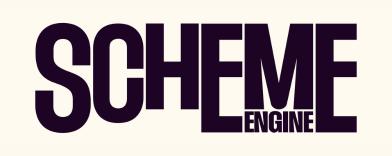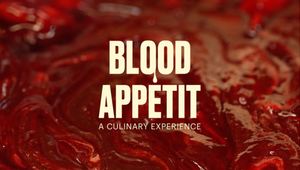
Unleashing the Power of VFX: Blacksmith's Work on Diablo IV Trailer

The launch of Diablo IV didn’t just ignite the gaming world – it also set a high bar for visual storytelling in trailers. Blacksmith, the VFX team behind the cinematic trailer, was tasked with translating the iconic action role-playing game into a visually stunning two-minute spectacle. From cutting-edge technology to creative freedom, the project pushed the team to new heights. LBB’s April Summers finds out how they tackled it, as a team.
Getting Involved
Blacksmith’s journey into the Diablo IV project began when their EP in LA, Meghan Lang Bice, received the treatment for the game. As it happens, creative director Tom Bussell and CG lead Tuna Unalan were working in the Los Angeles office at the time, an ideal situation for early calls with director Jon Watts and agency 72andSunny. With a Hollywood director like Jon involved, it was clear from the very beginning that the stakes were high – the script called for blockbuster-level VFX, and the team was eager to rise to the challenge.
“We’re always balancing ambition with practicality,” Tuna explains. “The script was loaded with epic moments, but we had to find a way to execute them within the time and resources available. It was a creative puzzle we had to solve internally, and it was one of the most rewarding parts of the job.”
For Blacksmith’s VFX team, the process began with a re-exploration of the Diablo universe. While some members were familiar with the game, others had to dive in headfirst.
Sharing his experience of the research and development phase, CG artist, Pablo Estrella, tells me, “I wasn’t a Diablo player before, but I made sure to download the game, play it, and really understand its lore and mechanics. It gave me insights into the visual style that fans expect, and I could incorporate that into the trailer.”
CG and VFX artist, Kushal Das, who had previously played the game, spent the R&D phase immersing himself in the world, paying special attention to Blizzard's cinematics and revisiting the series' expansive lore. These efforts helped the team stay true to the game’s visual identity while also allowing room for their own creative spin.
VFX for Commercials vs. Video Games
In the last year the Blacksmith team have pulled off epic VFX feats for huge commercials with the likes of Apple, adidas and ESPN. With these projects in mind, I am curious about how crafting VFX for a game trailer differs from the deliverables of a commercial.
I put this question to Ben Kwok, VFX supervisor and 2D lead, who points out: “When you’re working on a commercial, there’s a strong focus on making the product or talent look beautiful. But for a game, it’s about creating atmosphere, building engagement, and being allowed to get a bit darker and more creative. We could get into the gruesome details – things like blood, wounds, and adding a demonic essence to characters.”
Yebin Ahn, senior compositor on the Diablo IV project, echoes this sentiment, “There’s a unique creative freedom in video games that’s hard to achieve in commercials. I had the chance to make the main character’s face look ‘ruined,’ full of dark, demonic essence, which is not something you often get to do in commercial VFX.”
This freedom allowed Blacksmith’s artists to dig deeper into the world of Diablo and bring a more visceral, realistic quality to the game’s iconic characters.
Weighing in on the discussion, Tuna adds, “One of the best parts was taking these game characters, which are designed within a virtual world, and bringing them into a real-life environment. It required a lot of research into materials, textures, and physics to make them feel tangible. That creative challenge is what makes working on a game so exciting.”

A Lean and Agile Approach
Despite being small in size, Blacksmith’s team is highly efficient – a crucial advantage when working on a high-stakes project like Diablo IV. Yebin cites the team's streamlined collaboration when discussing the ways this work demonstrates their lean, agile, and cutting-edge capabilities.
“Everyone collaborated on this project across all departments, working under a tight deadline. Each team member contributed, sharing their creative visions, which motivated us to push harder and deliver a better looking outcome,” she says. “Effective communication was key to making this possible, as was a deep trust in our teammates. We place great value on trust; it is one of our core strengths.”
Pablo also points out Blacksmith’s nimbleness, highlighting how this allows them to quickly adapt to new tools and technologies: “For Diablo, we revised our pipeline, implemented updates in our render farm, and found faster ways to iterate on notes from clients and supervisors. We were constantly evolving to keep up with the demands of the project.”
For this particular project, the team created a custom system based around Houdini's USD Stage context, which, Kushal tells me “made it very easy to take many different CG elements and work concurrently in the same setup in a modular and non-linear way.”
Reflecting on the benefits of this system, he explains, “We focused on creating many interactive layers that procedurally updated across many shots that worked to ground and breathe life into non-simulated elements. For any shots with heavy time consuming simulations, FX artists provided additional data for a lighting artist to be able to manipulate the look and feel of the effect without needing to fully re-simulate the effect each time and extract as much detail as possible.”
A small team by choice, Blacksmith utilises the advantages afforded to them. With shorter feedback channels and quicker turnaround times, the team is capable of delivering at a level that’s every bit as good - if not better - than larger studios.
Collaboration, Communication, Creation
Seamless collaboration is the key to the success of a highly technical project like this. Due to their solid relationships - and having previously collaborated on a trailer for Call of Duty - the team describe the process of working together for this as “easy.”
“72andSunny is such a pleasure to work with, not only do we get to work on epic jobs together but also the process is always very collaborative and easy,” Tuna says. “We were communicating about the needs for Diablo very clearly from day one and you definitely want an agency who you work well with because on a VFX heavy job at this scale with a short post schedule, everybody needs to be a team player to help gather those pixels together to finish the job.”
Pablo adds, “The partnership was essential in making sure everything came together perfectly. The feedback loop was fast and effective, and everyone pushed to create something extraordinary.”
As the trailer launched, Blacksmith was flooded with positive reactions. Reflecting on the project, Ben sums up the team’s pride: “We were able to create a VFX-heavy trailer that felt like a two-minute blockbuster. It’s the kind of job where you’re proud of every single frame.”
Tuna agrees, touching on the buzz from fans: “The feedback has been great. Fans are excited about the work, and some even want to see a feature film based on the trailer! It’s a real testament to the effort and passion that went into it.”
Pablo is equally proud of the team’s resilience: “The technical and creative challenges were many, but we nailed it. The final product speaks for itself. Fans are noticing the seamless integration of VFX and live-action elements, and that’s incredibly satisfying.”
Working on Diablo IV was more than just a VFX challenge – it was a chance for Blacksmith to push their creative and technical boundaries. The collaboration, the freedom to get gritty with the visuals, and the team’s ability to innovate under pressure all played a crucial role in making the trailer a success. For the artists at Blacksmith, it’s a project they’re proud to have been a part of, and one that continues to spark excitement in both the gaming and VFX worlds.















